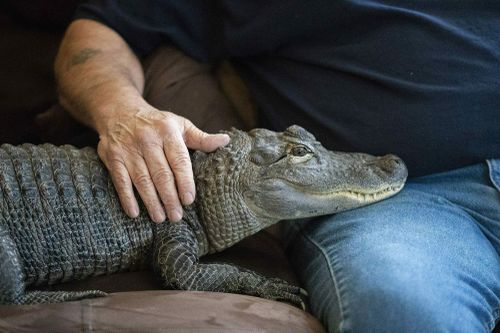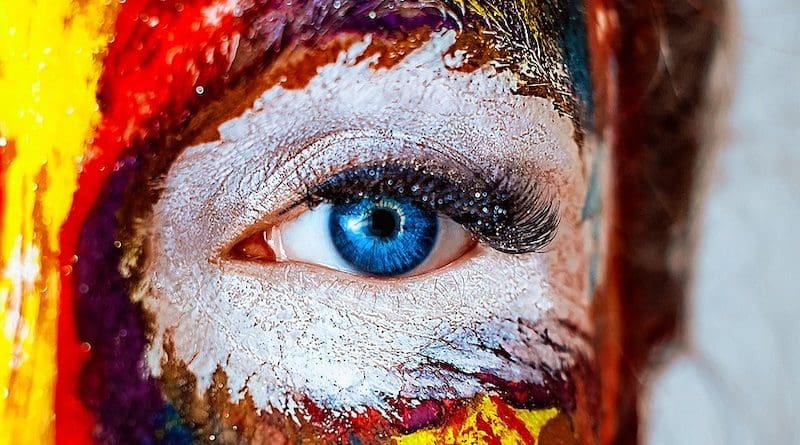By CNN
Emotional support animals registrations in the United States reached 115,832 last year, by an industry group's count.
But in the eyes of reptile rescuer Joie Henney, there's only one:
"Wally Gator" - his "gentle" certified emotional support alligator.
And now, Wally has gone missing – far from home.

While Henney, of northeast Pennsylvania, was visiting Brunswick, Georgia, on April 21, Wally disappeared from his outdoor pen, according to the Wallygator Facebook page.
A Georgia Department of Natural Resources "permitted trapper responded to a nuisance alligator call in Brunswick on 4/21," the agency confirmed to CNN in a statement.
The creature was secured and "later released in a remote location", the department's Wildlife Resources Division spokesperson Melissa Cummings said.
"The agent trapper's handling of a nuisance alligator was appropriate and routine," she told CNN.
The department "routinely" gets calls about "nuisance alligators", she said, and refers callers to a permitted alligator agent trapper, per its protocols.
Whether the animal released after the April 21 call was Wally, however, remains an open question: The Georgia Department of Natural Resources has no information to confirm it – nor any further information about Wally's whereabouts, Cummings said.
Still, the search is on.
A GoFundMe campaign Henney organised to cover travel, advising and possible legal and veterinary costs to "Bring WallyGator Home!!" is nearly a third of way to its $30,000 goal.
Henney did not immediately respond to CNN's request for comment on Wally's disappearance.
Wally, for his part, is no stranger to public attention, usually interacting with fans at events in his home state, as well as being the subject of popular TikTok and Instagram accounts organised by Henney.
Wally is often shown letting others pet and hold him, with Henney telling CNN in 2022, "He doesn't show anger. He doesn't show aggression. He hasn't since the day he was caught. We never could understand why."
Henney has had Wally since the reptile was a little over a year old and just 50 centimetres long.

He got the critter from Florida, where there is an "overabundance of alligators" and they are considered nuisances and often euthanised or put in captivity, he told CNN.
Even so, Henney often has gotten criticism over Wally, he said, because people "don't know the story behind everything".
In fact, Wally has provided companionship and support through Henney's radiation treatments for cancer.
"He's just loveable," Henney said.
"He sleeps with me, steals my pillows, steals my blankets. He's just awesome."
Pennsylvania has no law barring alligators as pets: The state Fish and Boat Commission does "not regulate possession of non-native species of reptiles and amphibians", its website states.
Georgia law, however, lets "only licensed or permitted individuals … retain alligators in captivity," Cummings said.
"Most native species of wildlife cannot be held without permits or licenses. These licenses are not issued for the purpose of having native wildlife as pets."
And the Peach State isn't the only place Wally hasn't exactly been welcome.
His fame reignited last year when the alligator was denied entry to a Philadelphia Phillies game.
According to Citizens Bank Park, any animals – excluding service dogs – are prohibited.
"Wally has been into other baseball games, so we assumed that it was OK," Henney said.
"We never asked or checked with it, but they only allow service animals, such as dogs and horses, into the stadium, not (emotional support) animals."
Similarly, the US Department of Transportation in 2020 announced airlines "are not required to recognise emotional support animals as service animals".
The latter is "a dog … trained to do work or perform tasks for the benefit of a qualified individual with a disability", while emotional support animals are prescribed by mental health professionals to provide their owners with comfort and support but don't have to be trained in specific tasks.
Henney at the time of the Phillies rejection made clear: "There was no disagreement, there was no arguing, there was no conflict at all. It was all good."






